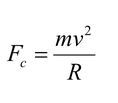![]()
![]()
![]()
Use LEFT and RIGHT arrow keys to navigate between flashcards;
Use UP and DOWN arrow keys to flip the card;
H to show hint;
A reads text to speech;
47 Cards in this Set
- Front
- Back
|
MATHEMATICAL CONSTANTS |

|
|
|
The speed of light |

|
|
|
Planck’s constant |

|
|
|
Universal gravitational constant |

|
|
|
Boltzmann constant |

|
|
|
Stefan-Boltzmann constant |

|
|
|
Mass of hydrogen atom, mH |

|
|
|
Avogadro’s number |

just like 12 objects per dozen |
|
|
Astronomical unit |

approx. 93,000,000 miles
|
|
|
Average Earth-Moon distance |
384,400 km, and 238,900 miles |
|
|
Earth’s diameter |
12,756 km, and approx. 8,000 miles |
|
|
Earth’s mass |

|
|
|
Sun’s mass |

|
|
|
Average surface acceleration on the Earth |

|
|
|
Circumference of a circle |

|
|
|
Area of a circle |

|
|
|
Surface area of a sphere |

|
|
|
Volume of a sphere |

|
|
|
Thermal (temperature) conversion |

|
|
|
Small angle formula |

where D = linear size, α = angular size, d = distance. |
|
|
Newton’s second law |
F=ma |
|
|
Newton’s law of universal gravitation |

|
|
|
Centripetal force |

|
|
|
Kepler’s third law |

|
|
|
Wien’s law |

|
|
|
Stefan-Boltzmann law |

|
|
|
Planck’s law |

|
|
|
Einstein’s mass-energy equivalence |

|
|
|
Position of an object due to a constant force |

|
|
|
Pythagorean theorem |

|
|
|
Sine function |

|
|
|
Cosine function |

|
|
|
Tangent function |

|
|
|
Distribution of Sin(x+y) |

|
|
|
Distribtion of cos(x+y) |

|
|

|

|
|

|

|
|

|

|
|

|

changing the base of a logarithm from x to b. |
|

|

|
|

|

|
|

|

|
|

|

|
|

|

|
|

|

|
|

|

|
|

|

|

